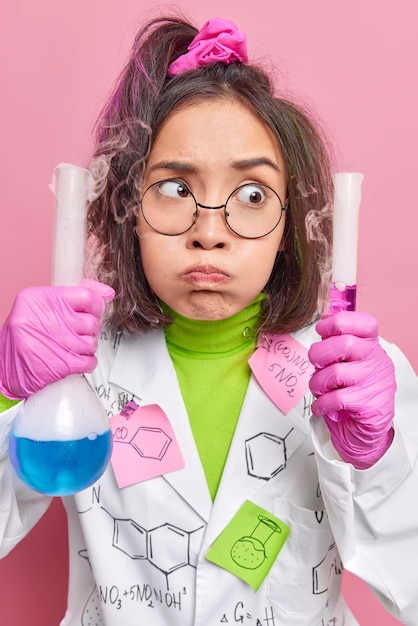Exploring Essential Facts about Chemical Changes

Chemical changes involve the rearrangement of atoms to form new substances.
Chemical reactions can produce heat, light, or sound.
Chemical changes are often irreversible.
Combustion is an example of a chemical change.
Rusting of iron is a chemical change.
Acid-base reactions are chemical changes.
Mixing vinegar and baking soda creates a chemical change.
Cooking food involves chemical changes.
Fermentation is a chemical change that produces alcohol.
The process of photosynthesis is a chemical change.
Nuclear reactions are also considered chemical changes.
Enzymes play a crucial role in speeding up chemical reactions.
Chemical changes can occur quickly or slowly, depending on the reaction.
Chemical changes can create new colors.
Chemical changes occur when bonds between atoms break or form.
Chemical changes often produce different odors.
Oxidation is a common type of chemical change.
Chemical changes are the basis of many industrial processes.
Chemical changes can be observed by changes in temperature or pH.
Chemical reactions can be dangerous if not handled properly.
Understanding chemical changes is important for drug development.
Chemical changes in the brain can affect mood and behavior.
Chemical changes in plants contribute to growth and development.
Environmental pollution is often caused by chemical changes.
Exploring Essential Facts about Chemical Changes part 2
Chemical changes in the atmosphere can lead to climate change.
Chemical changes in food can affect its nutritional value.
Understanding chemical changes is essential for designing new materials.
Chemical changes in the body are responsible for metabolism.
Chemical changes can occur spontaneously or with the addition of a catalyst.
Chemical changes in batteries create electrical energy.
Chemical changes in cosmetics can enhance beauty.
Chemical changes in cleaning products help remove stains and dirt.
Chemical changes in fireworks create dazzling displays of light.
Chemical changes in medicine can cure diseases.
Chemical changes in soap remove bacteria and dirt from our skin.
Chemical changes in photography process film and capture images.
Chemical changes in fertilizers promote plant growth.
Chemical changes in batteries power electronic devices.
Chemical changes in detergents clean clothes and dishes.
Chemical changes in paint transform surfaces.
Chemical changes in plastics create durable materials.
Chemical changes in motor oil lubricate engines.
Chemical changes in gasoline power vehicles.
Chemical changes in toothpaste clean and protect teeth.
Chemical changes in soap create bubbles for cleaning.